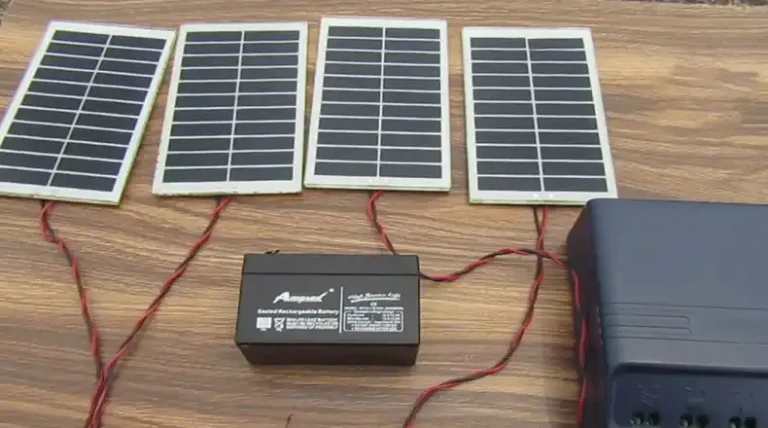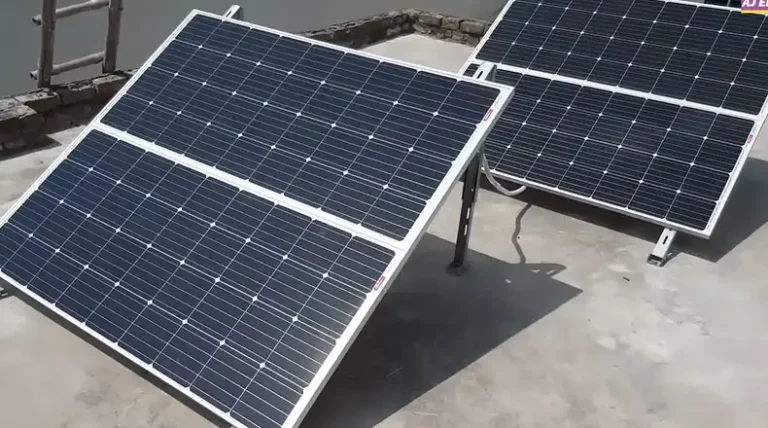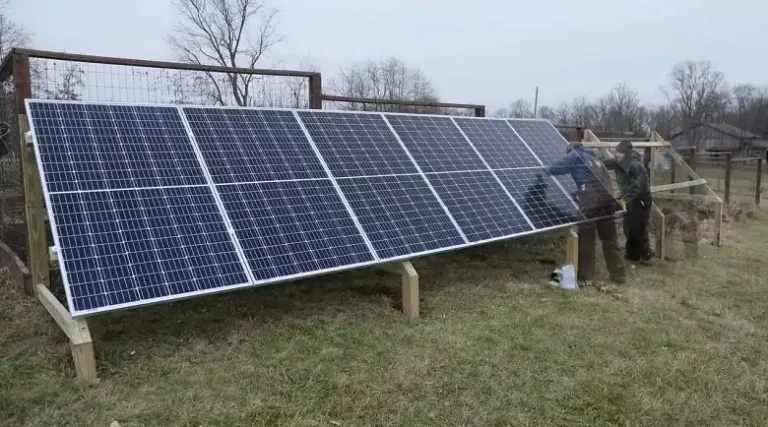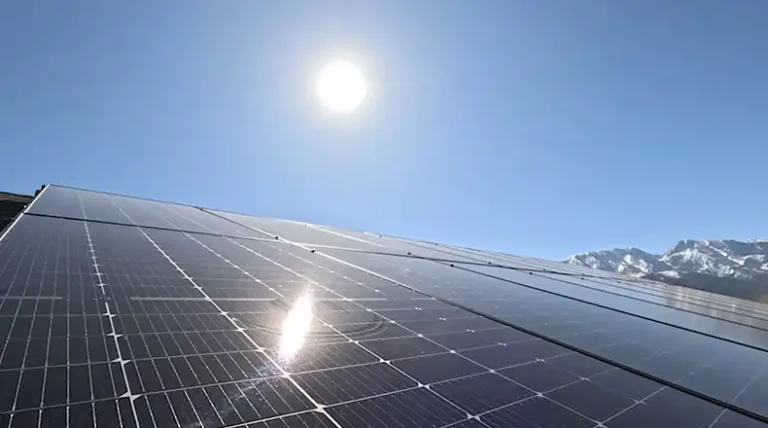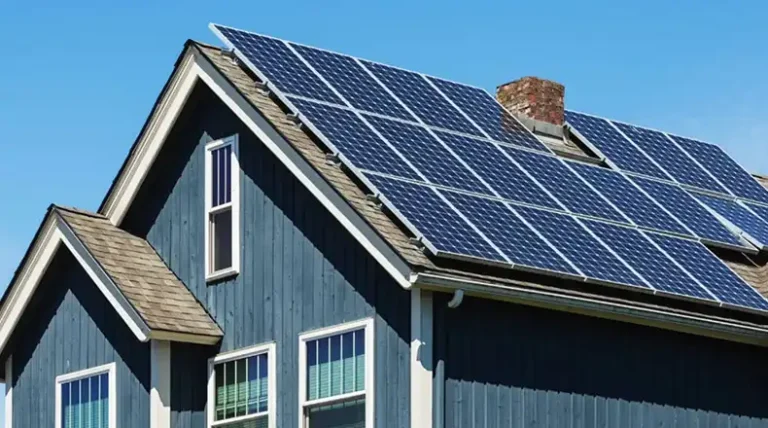Can Fire Charge a Solar Panel? General Discussion
You may have heard that fire can charge solar panels. Sounds cool, right? Using flames to make clean energy? But hold on – it’s not that simple. In this article, we’ll look at why fire can’t really power solar panels.
Solar panels work by turning sunlight into electricity in a special way. Fire gives off light too, but it’s the wrong kind of light.
I’ll break down exactly how solar panels make electricity from sunlight. Then, we’ll see why the light from fires doesn’t let solar panels do their job properly. It’s an interesting idea, but the science says it just won’t work well.
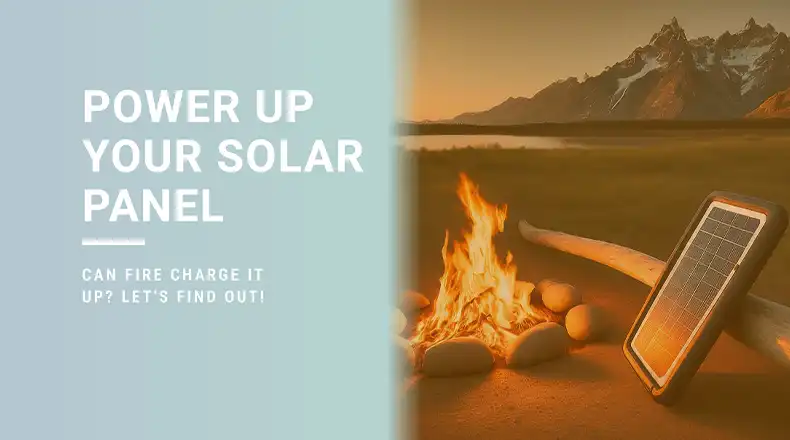
How do Solar Panels Produce Electricity?
Solar panels are designed to use the power of sunlight and convert it into electrical energy through a process called the photovoltaic effect. This process takes place within the solar cells that make up the panel, which are typically made of semiconductor materials like silicon.
When sunlight (which is composed of tiny particles called photons) strikes the solar cell, it knocks electrons loose from the semiconductor material. These free-flowing electrons create an electrical current that can be captured and channeled through an external circuit, allowing us to harness the power of the sun and turn it into usable electricity.
Why It isn’t Possible by Fire to Charge a Solar Panel?
While the idea of using fire to charge solar panels might seem plausible, there’s a fundamental issue – the type of light emitted by fire is not suitable for the photovoltaic process. You see, solar panels rely on the specific wavelengths of light found in sunlight to generate electricity effectively.
The problem with fire
Most of the light emitted by fire falls within the infrared spectrum, which has lower energy than the visible light and near-infrared portions of the solar spectrum that solar cells are designed to absorb and convert. Infrared light simply cannot be directly converted into electricity by solar cells, making fire an inefficient source for charging solar panels.
It’s not just about the light
Believe it or not, the issue isn’t just about the type of light – it’s also about the heat. Solar panel technology relies solely on light energy rather than heat. In fact, when temperatures rise too high, the electrons inside the electrical circuit can start bouncing around erratically, reducing the voltage and the amount of electricity generated. This is why solar panel installers carefully consider the temperature of the roof or surface when designing a solar panel system.
Measuring the light intensity
To put things into perspective, let’s look at the numbers. Sunlight typically has an illumination level of around 100,000 lux (a measure of light intensity), whereas a campfire’s flame falls somewhere in the range of 10-100 lux – a vast difference that highlights the inefficiency of using fire to charge solar panels.
The mismatch in light spectra
As mentioned earlier, solar cells are designed to absorb and convert the visible and near-infrared portions of sunlight. However, the light emitted by fire is predominantly in the infrared and red regions of the electromagnetic spectrum. This mismatch in the light spectra means that fire is simply not an effective source for charging solar panels.
Efficiency and energy conversion
Even if a minuscule amount of electricity could be generated from the visible light component of a fire, the conversion efficiency would be abysmally low compared to when solar panels are exposed to direct sunlight. Solar panels are meticulously engineered to maximize the absorption and conversion of the specific wavelengths of light found in sunlight, making them highly optimized for this purpose.
Potential damage to solar cells
It’s worth noting that exposing solar panels to the intense heat and open flames of a fire could potentially damage the sensitive components within the solar cells. Solar panels are designed to operate within specific temperature ranges, and prolonged exposure to high heat could compromise their performance and lifespan.
While the idea of using fire to charge solar panels might seem innovative and appealing on the surface, the fundamental principles of how solar panels operate make it an impractical and inefficient approach. Solar panels are engineered to harness the specific properties of sunlight, and fire simply doesn’t provide the right type of light or the optimal conditions for efficient energy conversion.
Closing Thoughts
At the end of the day, the thought of using fire to charge solar panels is pretty clever. But as we’ve learned, it just doesn’t work that well in reality.
Solar panels need the specific kinds of light found in sunlight to make electricity efficiently. The light from fires is mostly infrared, which solar panels can’t really use. Fires also make a lot of heat, which can mess with the solar panel’s electrical circuits.


